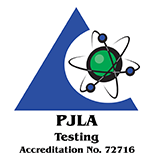Behind the Testing – How Colilert Works
Colilert uses the patented Defined Substrate Technology® (DST®) to simultaneously detect total coliforms and E. coli. Two nutrient-indicators, ONPG and MUG, are the major sources of carbon in Colilert and can be metabolized by the coliform enzyme β-galactosidase and the E. coli enzyme β-glucuronidase, respectively.
As coliforms grow in Colilert, they use β-galactosidase to metabolize ONPG and change it from colorless to yellow.
E. coli use β-glucuronidase to metabolize MUG and create fluorescence. Since most non-coliforms do not have these enzymes, they are unable to grow and interfere.
The few non-coliforms that do have these enzymes are selectively suppressed by Colilert’s specifically formulated matrix.
This approach is different from traditional media, which provide a nutrient-rich environment that supports the growth of both target organisms and nontargets. When nontargets grow and mimic target organisms, false positives occur. Growth of nontargets can also suppress target organisms and give false negatives in traditional media. To suppress nontargets, traditional media often include high levels of salts, detergents, or other selective agents that may inadvertently suppress target organisms and give further false negatives.
- Colilert (Minimal Media ONPG-MUG Test) is a direct test of water samples which simultaneously determines the presence of both total coliforms and E. coli within 24 hours, without the need for confirmatory testing.
- The Colilert only tests for E. coli, not fecal coliforms. E. coli is the only member of the coliform group that unquestionably is an inhabitant of the intestinal tract and it has become the definitive organism for the demonstration of fecal pollution of water.
- Colilert is a primary water test. Colilert performance characteristics do not apply to samples altered by any pre-enrichment or concentration.





